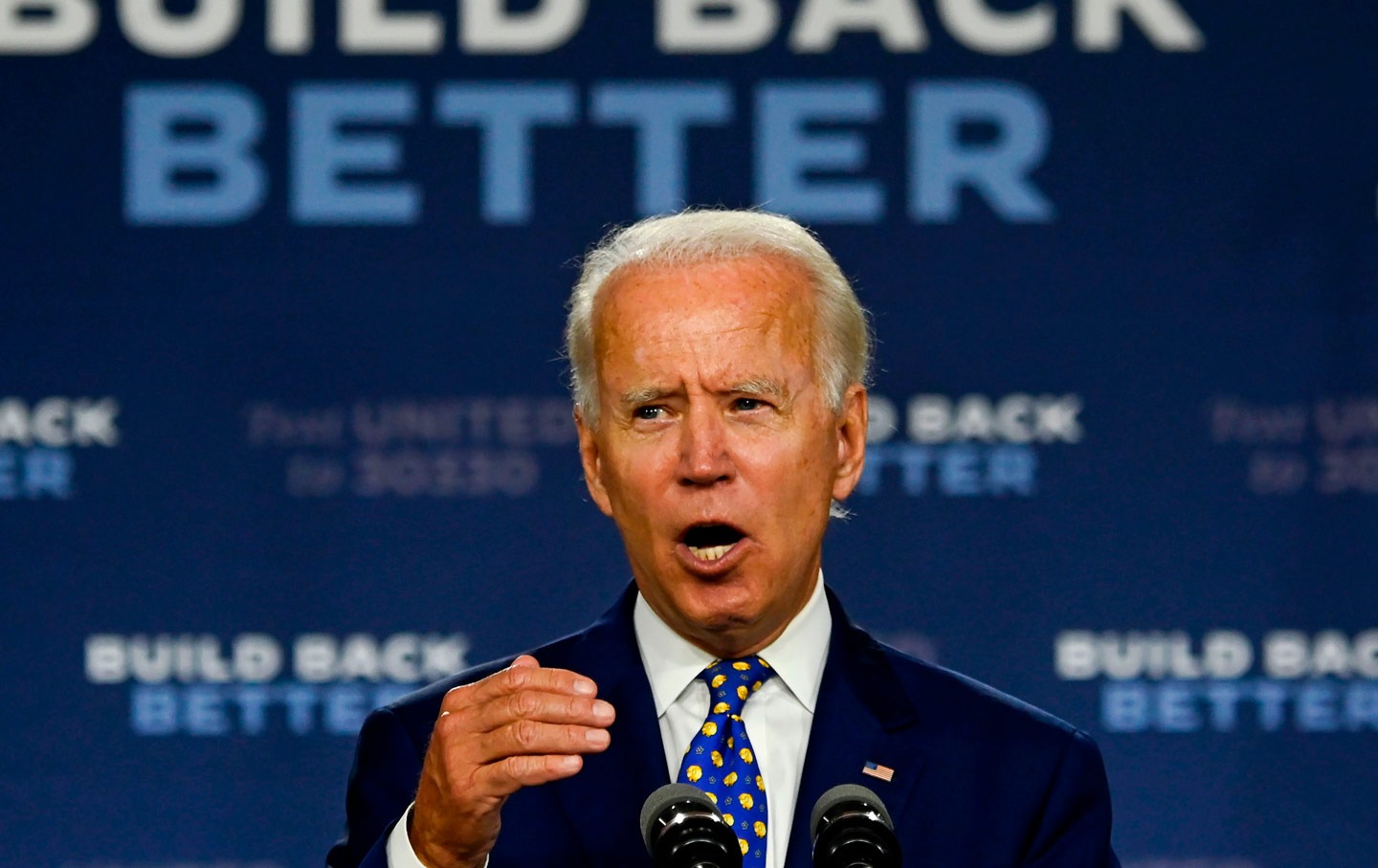In the final year of the previous administration led by President Donald Trump, the global pandemic caused a significant economic downturn. Notably, Trump suggested unconventional treatments, such as drinking bleach, which drew widespread criticism.
During this period, the United States witnessed substantial protests addressing racial injustice, marking some of the largest demonstrations since the civil rights movement.
Trump’s attempt at reelection ended in defeat, and he controversially sought to overturn the election results. Encouraging a mob to march towards the Capitol, his actions led to heightened tensions and left office with an approval rating of just 29 percent.

Biden (Credits: The Nation)
Despite these challenges, when reflecting on his presidency at recent campaign rallies, Trump presents a narrative of remarkable economic growth, exceptional statesmanship, and unparalleled prosperity, characterizing it as “among the greatest four-year periods in the history of the presidency. “Trump’s current campaign for a second term leans heavily on this grandiose retelling of his first term.
However, this narrative tends to exaggerate and misrepresent his accomplishments while overlooking aspects like consistently low approval ratings, facing two impeachments, a chaotic response to the COVID-19 pandemic, and failed legislative efforts. Additionally, it sidesteps the fact that he lost the election in a properly conducted manner.
Democrats, including those working on President Biden’s reelection campaign, are concerned that the twists and turns of Trump’s tumultuous presidency seem to be fading from voters’ memories faster than anticipated. This shift in public perception poses challenges for Biden in highlighting his accomplishments and differentiating his leadership from the preceding administration.
Trump and his supporters leverage his term as an unambiguous asset, urging voters to assess the evidence directly. Some argue that the world is not more peaceful now than three years ago and question personal prosperity.
Trump’s presidency, marked by day-to-day chaos, impulsive decisions, and turnover in Cabinet members, faced challenges both domestically and in foreign policy.
Biden had promised to move past the political chaos of the Trump era, focusing on unity and stability. However, Democrats are now working to remind voters of the issues they might have forgotten, emphasizing Trump’s divisive policies, chaotic management, and controversial responses to events like the racial justice protests and the COVID-19 pandemic.
One challenge for Biden is that Trump benefits from the typical pattern in recent American history, where voters tend to remember former presidents more fondly once they are out of office.
Trump’s retrospective approval rating is higher than his average approval rating while in office, and there is a widespread yearning for the economic conditions during the initial years of his administration.
Trump emphasizes economic achievements, such as tax cuts and claiming the greatest economy in history, although fact-checkers dispute some of these assertions. His supporters often highlight the perceived positives of his presidency, such as low unemployment, affordable gas, and a sense of hope and safety.
Despite Trump’s presidency being marked by controversy and tumult, some critiques, especially about his handling of the COVID-19 pandemic, appear to be fading from public memory. Trump’s supporters remain staunch, often deflecting blame from him and attributing any shortcomings to external factors.
As the election approaches, both Democrats and Republicans are shaping narratives about Trump’s presidency, with Democrats aiming to highlight its challenges and divisive aspects, while Trump and his allies present a rosy picture of economic success and strong leadership. The dynamics of how voters perceive this period will play a crucial role in the upcoming election.























